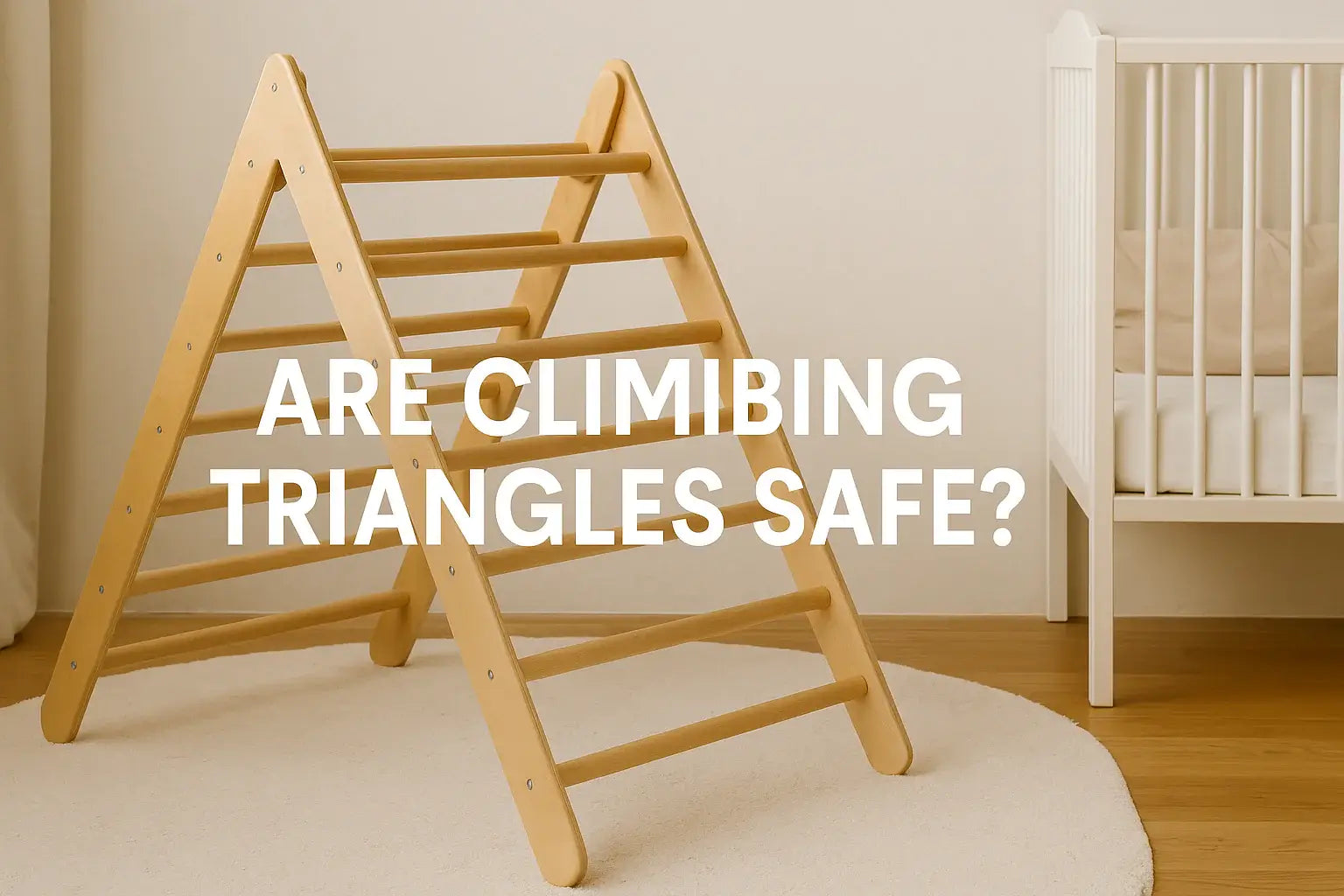
Are Climbing Triangles Safe?
What is a Climbing Triangle?
Let’s face it—kids love to climb. Whether it’s the sofa, the stairs, or you, if it’s vertical, they’re on it. That’s where climbing frames come in. These clever little structures give children a safe, controlled space to satisfy their climbing urges.
Originally inspired by child development expert Emmi Pikler, climbing triangles support movement, balance and confidence. They're often seen in Montessori and Waldorf settings, but more and more families are using them at home.
Origins and Philosophy (Emmi Pikler's approach)
Emmi Pikler, a Hungarian paediatrician, believed kids thrive when they can move freely and explore at their own pace. She wasn't into rushing milestones. Instead, she championed a respectful, child-led approach.
The climbing triangle is rooted in that philosophy. It’s not just about getting from A to B—it’s about discovering how to do it yourself.
Core Design and Purpose
At first glance, it might just look like a wooden frame. But the triangle shape is no accident. It’s low, stable, and inviting—designed for little hands and feet.
Some come with ramps or attachments, but the heart of the triangle is all about safe, open-ended play. It's a tool to build physical strength, problem-solving, and resilience—all while having a blast.

Inherent Safety Features in Design
Low-to-Ground Construction for Reduced Fall Impact
Unlike playground climbing frames, climbing triangles sit close to the floor. That means if your child does take a tumble, it’s not far to fall. Most kids roll off with a giggle rather than a scrape.
Quality Materials and Sturdy Build
Safety starts with good materials. Reputable brands use solid timber with smooth edges and non-toxic finishes. They’re built to handle plenty of clambering.
Look out for strong joints, a stable base, and a robust frame. Cheap imitations might save money upfront but can wobble or break under pressure.
Age and Developmental Appropriateness (e.g., 6 months to 5 years)
Most climbing triangles are designed for children from around six months (with ramps or bars to grip) up to about five years old. At each stage, the way they interact with it changes—from pulling up to clambering over.
It’s essential to check the age recommendation and make sure the triangle fits your child’s size and stage.

Ensuring Optimal Safety: Practical Guidelines for Use
Creating a Secure Environment and Effective Supervision
Choosing the Right Play Surface (Mats, Carpets)
Hard floors and climbing don’t mix. Place the triangle on a soft mat, foam tiles, or carpet to help cushion any falls.
Even with the low height, a padded surface adds peace of mind.
Maintaining a Clear Play Area (Avoiding Obstacles)
Clear some space around the triangle. That means no chairs, coffee tables, or stray toys nearby. Kids need room to explore safely from every angle.
It also reduces the chance of tripping or falling into something.
The Role of Active Adult Supervision (Why it's crucial)
Watching from a distance isn’t enough—especially in the early days. Stay close, guide them if needed, and offer encouragement.
You don’t need to hover forever. But in the beginning, your presence helps build confidence and trust.
Guiding Children on Safe Climbing Techniques
Show them how to use both hands and feet. Teach them to climb down backwards, not head-first (yes, that happens more than you'd think).
Model safe behaviour and praise their efforts. These early habits make a big difference.
Product Selection and Maintenance
Importance of Certified and Reputable Brands
When shopping, skip the unknown brands and look for CE marking or EN71 certification. These badges mean the product has passed proper safety tests.
You’re investing in something your child will use regularly—so don’t cut corners.
Regular Inspections for Wear, Tear, and Loose Parts
Give your climbing triangle a once-over every now and then. Check the screws, joints, and wooden slats.
Kids are surprisingly strong, and wear and tear is normal. A quick check keeps everything in safe working order.

The Wider Benefits: Why Climbing Triangles Are More Than Just Play
Promoting Holistic Child Development
Enhancing Physical Skills (Gross Motor, Balance, Strength)
Climbing strengthens more than muscles. It improves coordination, balance, and motor control.
From stretching up to pull themselves over a bar to figuring out how to pivot mid-climb—it's all valuable practice.
Fostering Cognitive Abilities (Problem-Solving, Spatial Awareness)
It’s not just physical. Climbing triangles challenge kids to think. They plan their route, adjust their grip, and work out how to get from one side to the other.
That’s problem-solving in action.
Cultivating Emotional Growth (Confidence, Independence, Creativity)
There’s something magical about seeing a child master a climb they once struggled with. Their face lights up. That’s confidence being built.
The triangle becomes a mountain, a spaceship, or a secret fort—it fuels imaginative play while helping them grow emotionally.
When used properly, climbing triangles are a brilliant mix of fun, movement, and learning. With the right setup, a bit of guidance, and regular checks, they offer a safe way for kids to explore their world—one rung at a time.
Have you checked out our other posts?
Are Climbing Walls Good Exercise?
Is A Toddler Climbing Frame Worth Having?
Are Climbing Frames Good For Kids?
Are Toddler Climbing Frames Safe?


Leave a comment